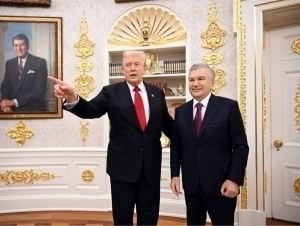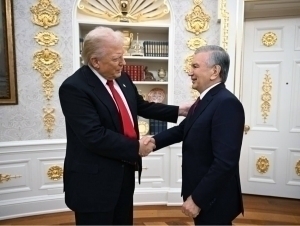Tashkent will be transformed into a major metropolis by 2045
Local
−
11 October 2024 34811 3 minutes
Tashkent is set to become a metropolis with a projected population of 7.5 million by 2045, according to President Shavkat Mirziyoyev, who reviewed the draft master plan for the city's transformation on October 9.
Currently, Tashkent spans 43,822 hectares and is home to over 3 million people. As the city expands, this area will grow by an additional 7,853.3 hectares. A new section of the city, located 20 kilometers from the center between the Karasuv and Chirchik rivers, is already being planned. This land will be taken from the Tashkent region, and the development projects for the new part of the capital are ready.
Notably, the renowned firm Zaha Hadid Architects will construct a complex in the new area, consisting of the Alisher Navoi Research Center, a Literary Museum, and a National Status Center, with completion expected by 2026.
“Uzbekistan has always been home to great architects who blend national values with creativity. We’ve taken these factors into account in this project, aiming to create an architectural masterpiece with a modern approach,” said Paolo Matteuzzi, director of Zaha Hadid Architects.
Zaha Hadid Architects, one of the world’s leading architectural firms, has been involved in iconic projects such as The Serpentine Sackler Gallery in London, Guangzhou Opera House, Beijing’s Daqing International Airport, Rome’s National Art Museum, and the Baku Cultural Center. Their work reflects over 30 years of research and expertise in harmonizing urbanism, design, and architecture.
The design of the complex's main area is inspired by the peacock, which changes appearance depending on the time of day. Its interior will reflect traditional Uzbek architectural elements.
But will the new Tashkent suffer from the same issues as the current city, such as traffic congestion, seasonal flooding, and power outages? Umidjon Fayziyev, the chief specialist of the New Tashkent Directorate, addressed this concern in response to the question of QALAMPIR.UZ:
“We cannot guarantee a problem-free New Tashkent, but we’ve developed the project by studying existing challenges and trying to prevent them. While no city is perfect, we’ve applied optimal solutions to issues like population density, and the buildings are being designed with considerations for wind direction, sunlight, and earthquake resistance.”
When asked about the potential impact of the energy crisis on New Tashkent, Jahangir Anvarov, head of the department at the New Tashkent Construction Directorate, explained:
“The primary goal of New Tashkent is to resolve the infrastructure issues seen in the old city. This new city will have separate engineering projects, including gas, water, electricity, and sewage systems, all operated by the New Tashkent administrative structure. Unlike the old city, the new area will feature tunnels for engineering networks, designed as underground galleries.”
The master plan for Tashkent and New Tashkent was developed by the British company Cross Works, which sparked discussions due to its small size and relatively recent establishment in 2020. Cross Works has primarily worked on projects in Uzbekistan and Central Asia, with limited experience on large international complexes.
So why was Cross Works chosen? According to Anvarov:
“Cross Works is serving as the main designer, and they are collaborating with experienced specialists from other foreign companies, including those from China, Turkey, and Russia. These teams are taking our climate, environment, and national identity into account. After reviewing many foreign firms, the government selected Cross Works as the most optimal choice.”




